 June 2010
The 45 Comes Alive
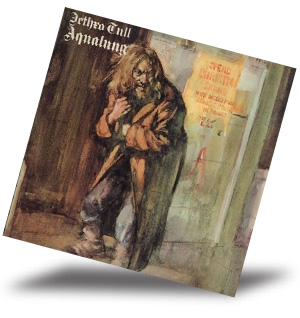 2009 was the year of the 45rpm
reissue. RCA may have lost out to
Columbia
all those years ago in the vinyl version of the format war (45 vs.
33 1/3), but look who’s laughing now. When Music Matters announced
reissues of select titles from the famous Blue Note catalog on
double 45rpm LPs, many may have wondered why. But it took only one
listen to understand that redoing LPs as 45s was the way to go for
top quality. Of course, much of the superiority of a 45 reissue
still came down to mastering, but when done right -- as Music
Matters demonstrated -- 45rpm beat 33 hands down. Now we see many
more labels jumping on the 45rpm bandwagon, some just because they
can redo old titles and charge premium prices, but others because
they can offer a superior product. Three of the latter companies --
the ones who do it right -- are Music Matters, Classic Records, and
ORG (Original Recordings Group). 2009 was the year of the 45rpm
reissue. RCA may have lost out to
Columbia
all those years ago in the vinyl version of the format war (45 vs.
33 1/3), but look who’s laughing now. When Music Matters announced
reissues of select titles from the famous Blue Note catalog on
double 45rpm LPs, many may have wondered why. But it took only one
listen to understand that redoing LPs as 45s was the way to go for
top quality. Of course, much of the superiority of a 45 reissue
still came down to mastering, but when done right -- as Music
Matters demonstrated -- 45rpm beat 33 hands down. Now we see many
more labels jumping on the 45rpm bandwagon, some just because they
can redo old titles and charge premium prices, but others because
they can offer a superior product. Three of the latter companies --
the ones who do it right -- are Music Matters, Classic Records, and
ORG (Original Recordings Group).
When I first saw Classic Records moving into
the 45rpm arena, I was confused. Classic was also doing the Blue
Note catalog, albeit in 33 and only in mono, so why bother with 45s?
To answer that question, Classic sent me a three-song sampler of
their 45rpm reissue of Jethro Tull’s
Aqualung. I’ve owned the Classic 33rpm
reissue of Aqualung
for a few years now, and I consider it the definitive reissue of
that classic title. So when I got the 45 sampler on both black vinyl
and Classic’s new Clarity (clear) vinyl, I knew I was in for some
fun.
Unsurprisingly, there was a clear difference
between the 45rpm and the 33. The Clarity 45 offered a greater sense
of realism than the excellent 33, and the instruments were more
accurately rendered. Ian Anderson’s vocals also sounded more like
those of a real person. But while it’s no shock that Classic can do
45 with the best of them, I was surprised by the difference between
the Clarity vinyl and the black vinyl 45. Each one-sided 45rpm LP
contained the songs “Aqualung,” “Cross-Eyed Mary,” and “Cheap Day
Return,” and it was obvious that the new clear vinyl offered a
superior sonic experience. All three tracks demonstrated this
difference, but it was most obvious on the predominantly acoustic
“Cheap Day Return.” To say there was a greater sense of instruments
playing in real space would be an understatement.
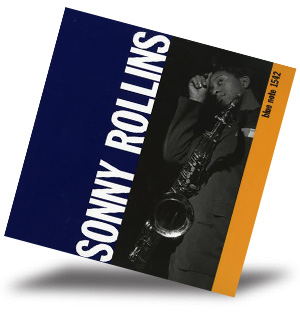 If you really love
Aqualung,
then owning the Clarity vinyl 45rpm version is about as close to
hearing the master tape as most of us are likely to get. It’s an
outstanding entrance to the 45rpm arena by Classic Records. If you really love
Aqualung,
then owning the Clarity vinyl 45rpm version is about as close to
hearing the master tape as most of us are likely to get. It’s an
outstanding entrance to the 45rpm arena by Classic Records.
While some labels have jumped into producing
45s, Music Matters has taken its time to improve an already
class-leading product. Continuing to demonstrate why it’s still the
ne plus ultra of vinyl-reissue companies, Music Matters has focused
on something that most labels treat as an afterthought: the quality
of the covers. Music Matters has made an already outstanding series
even better by improving the covers and using a new top-quality
paper for the inside photos. The new paper holds definition and
image edges as well as anything I’ve seen, and the new glossy covers
will leave you drooling with anticipation. Just take a gander at
Sonny Rollins Vol. 1
and Lee Morgan’s Search for the New Land
to see what I mean.
Sonny Rollins Vol. 1,
in mono, is among the best-sounding titles in the Music Matters
catalog, and it’s one of engineer Rudy Van Gelder’s most impressive
efforts. Despite the inherent restrictions of its mono recording,
the musicians come alive in front of you. This LP transports you
back to Van Gelder’s studio in 1957, where you can hear Rollins,
trumpeter Donald Byrd, pianist Wynton Kelly, bassist Gene Ramey, and
drummer Max Roach playing both as individual artists but also as a
team. Even the piano, usually a sore point with many of Van Gelder’s
recordings, sounds much more like a full-sized instrument. And
Sonny’s tenor sax sounds like it’s right there in front of you.
Musically, these five tunes run the gamut from slow to hard, giving
you a taste of Sonny’s full musical range. I wouldn’t wait too long
to pick up a copy, as this one is destined to sell out quickly. And
as with all Music Matters LPs, once they’re gone they’re never
coming back.
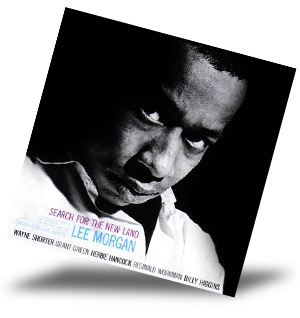 Lee Morgan had been recording for Blue Note off
and on for a number of years before recording
Search for the New Land.
He was just coming off his surprise hit LP
The Sidewinder, and
Blue Note, trying to capitalize on its unexpected success, felt
Search
didn’t have a hit sound. So the label sat on it in favor of its
follow-up, The Rumproller,
even though Search
was more in tune with Morgan’s musical direction at the time. But
Search was
worth the wait, and it may very well be Morgan’s greatest album.
With able assistance from Wayne Shorter on tenor, Grant Green on
guitar, Herbie Hancock on piano, Reggie Workman on bass, and Billy
Higgins on drums, Morgan was able to take the music in his head and
perfectly translate it to tape. From the modal stylings of the title
track to the fiery lines of “Mr. Kenyatta,” Morgan was pushing the
boundaries of jazz while staying true to his hard-bop roots and
keeping his music accessible. That’s a fine line to walk, but Morgan
walked it like a pro. Lee Morgan had been recording for Blue Note off
and on for a number of years before recording
Search for the New Land.
He was just coming off his surprise hit LP
The Sidewinder, and
Blue Note, trying to capitalize on its unexpected success, felt
Search
didn’t have a hit sound. So the label sat on it in favor of its
follow-up, The Rumproller,
even though Search
was more in tune with Morgan’s musical direction at the time. But
Search was
worth the wait, and it may very well be Morgan’s greatest album.
With able assistance from Wayne Shorter on tenor, Grant Green on
guitar, Herbie Hancock on piano, Reggie Workman on bass, and Billy
Higgins on drums, Morgan was able to take the music in his head and
perfectly translate it to tape. From the modal stylings of the title
track to the fiery lines of “Mr. Kenyatta,” Morgan was pushing the
boundaries of jazz while staying true to his hard-bop roots and
keeping his music accessible. That’s a fine line to walk, but Morgan
walked it like a pro.
The stereo sound of
Search for the New Land
is good, though it doesn’t meet the standard set by the Sonny
Rollins LP. Morgan plays out of the left channel and has a brassy
bite and tone to his trumpet. Shorter plays out of the right
channel, and while he also has a bright tone, it’s easy to
differentiate him. Morgan sounds like he’s coming straight at you,
while Shorter’s sound winds its way through a labyrinth of brass
before shooting out. Green’s guitar, Hancock’s piano, Workman’s bass
and Higgins’s drums are laid out left to right behind them, and
there’s a good sense of air and space around each instrument. More
than any other Lee Morgan album, I find that I can listen to this
one repeatedly and always come away with a new experience.
ORG is relatively new to the 45rpm reissue
game, though its owners are seasoned pros. I wasn’t surprised, then,
when I received a few of their latest LPs and found them to be
exceptional.
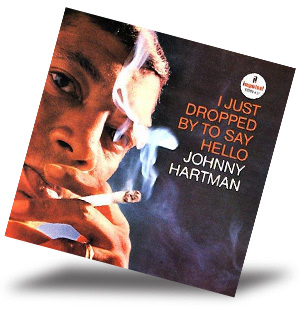 Two standouts are
John
Coltrane and Johnny Hartman and
Hartman’s I Just Dropped By to Say Hello.
In the former, Hartman is backed by the John Coltrane Quartet, with
Coltrane on tenor sax, McCoy Tyner on piano, Jimmy Garrison on bass,
and Elvin Jones on drums, while he sings a collection of jazz
standards. This is an often-overlooked entry in Coltrane’s Impulse!
catalog. By the time he moved to Impulse!, Coltrane was leaving his
melodic style behind in an attempt to stretch the boundaries of the
tenor sax. But this recording proves that he never forgot his
earlier lessons. He and Hartman were perfect partners, and the
transitions between Hartman’s vocals and the quartet’s instrumentals
sound as smooth as butter. Two standouts are
John
Coltrane and Johnny Hartman and
Hartman’s I Just Dropped By to Say Hello.
In the former, Hartman is backed by the John Coltrane Quartet, with
Coltrane on tenor sax, McCoy Tyner on piano, Jimmy Garrison on bass,
and Elvin Jones on drums, while he sings a collection of jazz
standards. This is an often-overlooked entry in Coltrane’s Impulse!
catalog. By the time he moved to Impulse!, Coltrane was leaving his
melodic style behind in an attempt to stretch the boundaries of the
tenor sax. But this recording proves that he never forgot his
earlier lessons. He and Hartman were perfect partners, and the
transitions between Hartman’s vocals and the quartet’s instrumentals
sound as smooth as butter.
This may be an Impulse! recording, but it was still engineered by
Rudy Van Gelder. Somewhat surprisingly, given how deep into the
stereo era jazz had gone by that time, Van Gelder used the
old-fashioned left, center, right technique. While it’s a bit
disconcerting to begin with, the clearly rendered tone and timbre of
each instrument -- especially Coltrane’s tenor -- carries the
recording so that you’ll hardly notice the instrument placement. And
Hartman’s voice is full, deep, and rich, with a realistic sound. I
was dumb enough to buy a few of the 1990 Impulse! reissues of some
of their biggest jazz titles, and this was one of them. But now that
I’ve heard the ORG, this is the LP I grab when I want to show people
the importance of proper remastering. It outdoes the older 33
version in every conceivable way.
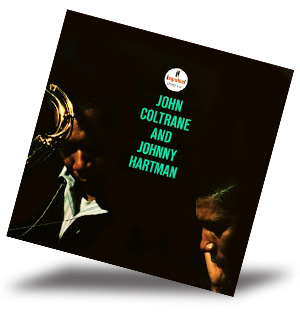 I
Just Dropped By to Say Hello
features Hartman backed by the all-star lineup of Hank Jones on piano,
Illinois Jacquet on tenor sax, either Kenny Burrell or Jim Hall on
guitar, Milt Hinton on bass, and Elvin Jones on drums. Once again,
Hartman sticks to standards, with none longer than four minutes and
most under three. Hartman once again sings with a fully formed and
cleanly captured tenor, though it doesn’t sound quite as good as on
the Coltrane/Hartman LP. But if you’re a fan of Hartman, you won’t
be disappointed with this LP. He’s in your room, singing just for
you. I
Just Dropped By to Say Hello
features Hartman backed by the all-star lineup of Hank Jones on piano,
Illinois Jacquet on tenor sax, either Kenny Burrell or Jim Hall on
guitar, Milt Hinton on bass, and Elvin Jones on drums. Once again,
Hartman sticks to standards, with none longer than four minutes and
most under three. Hartman once again sings with a fully formed and
cleanly captured tenor, though it doesn’t sound quite as good as on
the Coltrane/Hartman LP. But if you’re a fan of Hartman, you won’t
be disappointed with this LP. He’s in your room, singing just for
you.
Sonically, I Just
Dropped By has more of a spread of
instruments behind Hartman, who stands dead in the middle. The
guitar seems to move around from track to track, but that could
simply be the switchover from Burrell to Hall. The only fly in the
ointment is that there’s a bit more surface noise on this LP than
I’m used to from a premium reissue. Otherwise, this album belongs in
the library of any serious jazz fan.
ORG is a real player in the premium 45rpm LP reissue race, and one
you’d do well not to overlook. While it’s not quite up to the
standards set by Music Matters, the label runs a close second and
offers an array of albums that will excite you during every listen.
The 45rpm LP has now, thanks to companies like Music Matters,
Classic, and ORG, become the de facto format for audiophile labels
to remaster their LPs for the best possible sound. It looks like RCA
was right all along.
. . . John Crossett
johnc@soundstagenetwork.com
|

